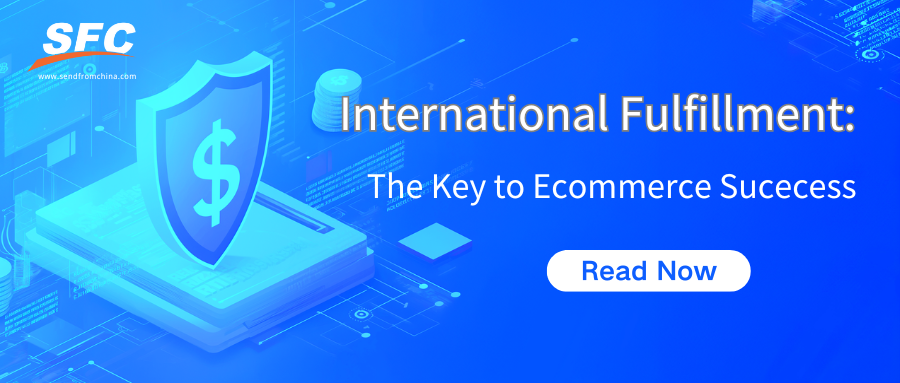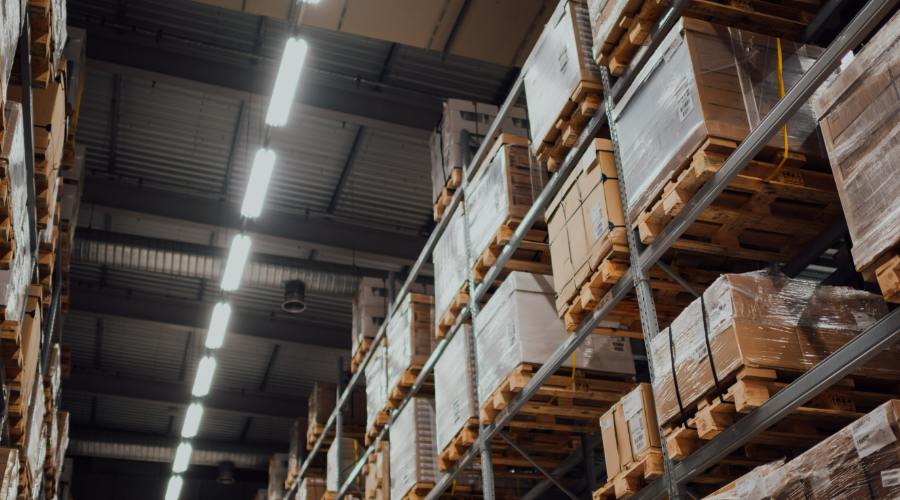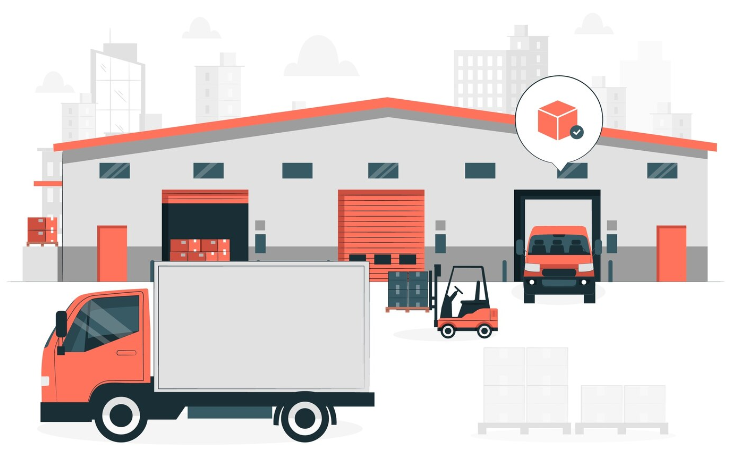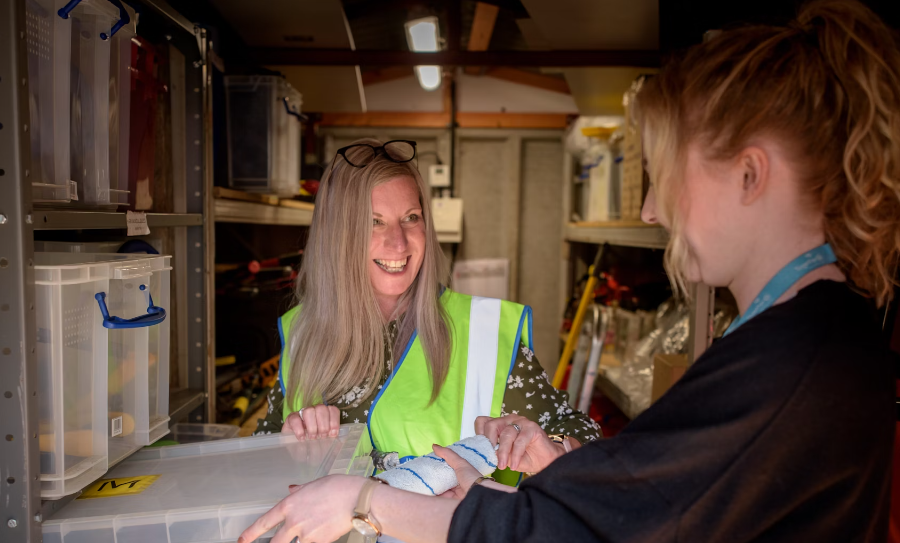Table of Contents
What Is International Fulfillment? The Key to Ecommerce Success
Time: Mar 31,2025 Author: SFC Source: www.sendfromchina.com
In today’s hyper-connected world, a small business in Ohio can sell handmade candles to a customer in Osaka as easily as to someone down the street. But behind that seamless transaction lies a complex web of logistics, regulations, and strategic planning. This is where international fulfillment comes into play—a critical yet often misunderstood component of global commerce.Let’s cut through the jargon and explore what international fulfillment truly means, why it matters, and how businesses can leverage it to thrive in the competitive global marketplace.

Key Takeaways
- International fulfillment involves storing, packing, and shipping e-commerce orders across borders, managing all logistics, customs clearance, and documentation.- Cross-border e-commerce is rapidly growing—over 55% of global shoppers buy internationally, creating significant opportunities for online sellers.
- Managing international orders involves order processing, customs paperwork, efficient shipping options, and handling returns, often requiring specialized expertise.
- Hidden costs of international fulfillment include customs duties, taxes, longer transit times, compliance paperwork, returns management, and possible hidden fees from fulfillment partners.
- Before choosing a fulfillment provider, ask key questions about their global shipping network, customs management capabilities, technological integration, transparent pricing, and scalability to match your growth.
- International fulfillment isn’t limited to large companies—small and mid-sized businesses can leverage third-party services to expand globally without huge upfront costs.
1. What Is International Fulfillment?
International fulfillment is the process of preparing and shipping e-commerce orders to customers across national borders. Essentially, it’s everything involved in delivering an order from your store to someone in another country, including storing inventory, picking and packing items, handling international shipping, dealing with customs paperwork, and final delivery to the customer’s door. In other words, international order fulfillment extends your regular fulfillment process to serve shoppers outside your home country.What makes international fulfillment unique is the added complexity of cross-border trade. Every country has its own import regulations, duties and taxes, and shipping carriers. A product that ships overnight domestically might take a week or more to reach a customer overseas due to distance and customs clearance. For the retailer, this means you must manage different shipping methods, customs forms, and compliance requirements for each destination.
International fulfillment often relies on third-party logistics providers (3PLs) or specialized fulfillment partners who have expertise in global shipping. These partners may have fulfillment centers in multiple countries or strong shipping networks to ensure your product can be delivered worldwide. The goal is to give international customers a smooth experience almost as if they were ordering from a local seller.
2. Why Is International Fulfillment Important?

Expanding internationally can greatly boost your sales and brand reach. You can connect with enthusiastic new customers in regions where demand for your product may be high and local supply is low. For example, an indie fashion retailer in the US could find a big following in Europe or Asia if those styles are scarce there. By leveraging international fulfillment, even a small business can serve these overseas customers without needing to set up physical stores abroad. As one industry guide puts it, not exploring international markets today could mean “missing out on a huge opportunity” for growth. The global e-commerce market is booming – it’s forecast to surpass $6 trillion USD by 2024, and cross-border e-commerce specifically is expected to reach $7.9 trillion by 2030. Clearly, merchants can no longer ignore the need for a global e-commerce strategy if they want to stay competitive.
International fulfillment is also important for meeting customer expectations. Shoppers around the world increasingly expect to buy any product, from anywhere, and have it delivered. If your online store can’t ship internationally (or has very slow, expensive international shipping), you may lose those customers to a competitor who can. In a survey, nearly two-thirds of retailers said they are now doing or planning cross-border e-commerce, and 94% encountered paperwork delays at customs that hurt customer experience – highlighting how crucial it is to get global logistics right. By investing in reliable international fulfillment, you provide a better experience (faster shipping, upfront duty costs, easy returns) that can help win loyal customers overseas.
3. How Does International Fulfillment Work?

Order Processing
Once the customer checks out (paying through your website, which handles currency conversion), you receive the order details. Your system will need to capture the destination country and address, and often a phone number for international shipping.Picking & Packing
Just like a domestic order, the items must be picked from inventory and packed securely for shipment. The difference is you might choose to fulfill from a different warehouse depending on the destination. For instance, if you have stock in a European fulfillment center, you’d route the order there to ship within Europe. If not, you’ll ship from your main warehouse in the US. Either way, careful packing is vital for a longer transit and international handling.Customs Documentation
This is a crucial added step. Shipping across borders requires customs paperwork (like a commercial invoice and customs declaration) that lists the contents, value, and origin of the shipment. You’ll need to correctly classify the goods (using HS codes) and state if duties or taxes are prepaid. Many fulfillment services help automate the documentation. Errors in customs forms can cause delays or even the package being returned, so accuracy matters.Shipping & Carriers
With package ready and documents, the order is handed off to an international shipping carrier. Depending on the service level, it may go by air for faster delivery or by ocean/ground for economy shipping. Large fulfillment partners often have relationships with 50+ international shipping carriers to secure competitive rates. The package will be exported from the origin country and then imported into the destination country. During import, customs officials may inspect it and assess any import duties or VAT (value-added tax) if applicable.Customs Clearance & Delivery
If duties/taxes are due, either the sender or the receiver must pay them for the package to clear customs. Many e-commerce retailers choose Delivered Duty Paid (DDP) shipping, meaning you (the seller) pre-pay the import fees so the customer isn’t surprised with a bill on delivery. Otherwise, the shipment might go Delivered Duty Unpaid (DDU) and the local carrier will collect fees from the customer upon delivery – which can lead to a poor experience if unexpected. Once cleared, the package is handed to a local courier (e.g. La Poste in France) for final doorstep delivery. Throughout this journey, tracking updates are provided so both you and the customer can monitor the shipment.Returns Handling
If the customer needs to return the product, international fulfillment should have a process for that too. Often, the fulfillment partner will provide a local return address or instructions so that returns can be consolidated and sent back in bulk, rather than making the customer ship it all the way back overseas on their own.4. The Hidden Cost of International Fulfillment

Higher Fulfillment Expenses
Fulfilling orders worldwide can be pricey. In fact, order fulfillment (picking, packing, shipping) now often represents 25–30% of total supply chain expenses for online retailers. When you go international, costs can creep up further. You might need to pay for multiple warehouses, hire staff or 3PL services abroad, and maintain technology systems across regions. These expenses aren’t always apparent at the start. As one guide noted, while shipping fees are the most obvious cost, “it’s often the hidden costs that catch businesses off guard”.Customs Duties, Taxes, and Fees
When shipping across borders, you encounter import duties (tariffs) and taxes like VAT or GST. Who pays these? If you choose to cover them (DDP shipping), that’s an extra cost to you, the seller. If you leave them to the customer (DDU), the cost might not hit your ledger, but it can lead to unhappy surprises for your buyer, possibly hurting your reputation or causing refused deliveries. Additionally, if an item is returned, it’s possible you paid duties that you can’t easily recover – essentially a lost cost. Some countries have programs to refund duties on returned goods, but it’s paperwork-heavy. Small businesses often end up eating that cost or writing it off.Returns and Reverse Logistics
International returns can be a silent profit killer. Let’s say you sold a $100 item to a customer overseas and paid $20 in shipping and $15 in import taxes to get it to them. If they return it, you might refund the $100 and also be out the $35 in logistics costs – and you now have to decide whether to pay another $20 to ship it back to your base, or have it disposed of locally. That’s before even considering if the item can be resold. One analysis pointed out the negative impact of duty payments on returned items – it’s money that’s hard to get back. In short, handling returns globally requires a game plan (like having return centers or letting customers keep low-value items as a refund resolution) to minimize losses.Shipping Surprises and Surcharges
International shipping quotes can be complex. Beyond the base rate, there are often surcharges – fuel surcharges, remote area fees, package handling fees, etc. There’s also the risk of dimensional weight charges: carriers charge by volume for lightweight but bulky packages (think pillows or winter coats). If your product is light but takes up space, you might be charged as if it’s heavier than it is. All these extra fees can nibble at your margins. If not carefully managed, you might price a product thinking shipping will cost $20, only to find out later about an extra $10 fee that you hadn’t budgeted for.Cart Abandonment Due to Costs
Not all costs are on your accounting sheet; some show up in lost sales. High international shipping costs presented at checkout will turn customers away. Roughly 36% of consumers who abandon their online shopping cart do so because of high shipping costs. If your international fulfillment isn’t optimized and you can only offer expensive shipping, you could be silently losing a third of potential overseas orders. That’s a hidden cost in the form of opportunity loss.Operational Complexity and Compliance
Expanding fulfillment internationally introduces complexity that can indirectly cost money. You’ll deal with multiple currencies, exchange rate fluctuations, and maybe even need to translate customer service queries. There’s also the cost of compliance: differing regulations for labeling, product standards, or data protection in each market. A recent survey found 82% of businesses feel that cross-border compliance complexity impacts their decision to sell in new markets. Many businesses invest in legal advice or software tools to manage taxes and compliance – those costs add up, but ignoring compliance can cost even more in fines or shipment seizures.Quality Control and Partners
If you partner with an overseas fulfillment center that offers a bargain rate, be cautious. Sometimes a “cheap” fulfillment service might skimp on handling, leading to more damaged products or lost inventory. For example, items can get broken or lost in a poorly managed warehouse, which then increases your customer support workload and replacement costs. It’s a hidden cost if you have to reship products or refund orders due to fulfillment errors. The old adage “you get what you pay for” often applies – a super low fulfillment fee might come at the expense of reliability, and that will cost you in the long run.5. 5 Must-Ask Questions Before Choosing a Fulfillment Partner
Not all 3PLs (third-party logistics providers) are created equal. Vet partners by asking:1. “Do you have experience in my target markets?” (e.g., Mexico’s RFC tax ID requirements)
2. “How do you handle customs delays?” Look for real-time tracking and proactive resolution.
3. “What’s your peak season surcharge structure?” Avoid providers with hidden December fees.
4. “Can you integrate with my tech stack?” Compatibility with Shopify, WooCommerce, etc., is key.
5. “What’s your sustainability policy?” 55% of global consumers pay more for eco-friendly shipping (IBM).
6. Why Choose SFC As Your International Fulfillment Partner
When it comes to international fulfillment, SFC (Send From China) stands out as a partner equipped to help e-commerce businesses thrive globally. Here’s why SFC deserves a spot on your shortlist:
Proven Experience and Scale
SFC isn’t a newcomer – they’ve been in the game since 2007 (with roots going back to 2001) and have over 15 years of experience in cross-border e-commerce logistics. They handle fulfillment for 1,000+ online sellers around the world, which means they’ve encountered and solved just about every international shipping challenge out there. This depth of experience translates into reliability. You won’t be their guinea pig; you’ll be benefiting from a system that’s been refined over years.Global Fulfillment Network
SFC offers a China-based fulfillment center with worldwide reach. This is ideal if your products are manufactured in China or you source inventory there – your goods can go straight from the factory to SFC’s warehouses, skipping domestic handling altogether. From their strategically located centers, SFC can ship to over 200 countries and regions (covering all major e-commerce markets like the US, Canada, UK, Europe, Australia, and beyond). They have partnerships with 50+ international shipping carriers, meaning they can find the best shipping route for each package, balancing speed and cost. Whether you need to send a parcel to New York, London, or a remote town in South America, SFC has a logistics channel for that.Technology Integration and Automation
SFC is a tech-powered 3PL. They integrate seamlessly with popular e-commerce platforms like Shopify, eBay, Amazon, WooCommerce, AliExpress and more. This integration auto-syncs your orders to their system, so you don’t have to lift a finger once a sale is made – the fulfillment process triggers automatically. SFC also provides real-time order tracking and inventory management through their system. They employ automated equipment in their warehouses, capable of processing and shipping over 500,000 orders within 24 hours during peak times. In short, their tech helps keep your customers’ orders flowing smoothly, and it gives you visibility at every step.Transparent and Cost-Effective Pricing
Unlike some fulfillment providers that have a complicated fee structure, SFC prides itself on no hidden fees. They keep it simple with three basic fee types: storage, pick & pack, and shipping. This clarity helps you forecast your fulfillment costs easily. Moreover, their pricing is volume-friendly – storage fees decrease as your shipment volume increases. For growing businesses, this means your per-unit fulfillment cost can actually go down as you scale up (a welcome relief for your margins). SFC’s large network and shipping volume often allow them to offer very competitive shipping rates, which they pass on to you.Comprehensive Services (Beyond Just Shipping)
SFC handles quality inspections, kitting & assembly, custom packaging, and even crowdfunding fulfillment services. If you have special packaging needs or a Kickstarter project with thousands of backers worldwide, they have systems in place for that. They also support dropshipping fulfillment, making it easy to ship individual orders from China directly to customers globally. This breadth of services means SFC can grow with you – from a small batch of orders to large-scale operations – without missing a beat.Dedicated Support and Custom Solutions
Despite their large scale, SFC offers personalized service. They assign a dedicated customer manager to work with you, understanding your business needs and tailoring solutions. For example, you can set up automatic shipping rules in their system – such as choosing the cheapest shipping option for standard orders, or a specific courier for high-value orders – and it all runs hands-free. If any issues arise, having a dedicated point of contact means faster resolution. SFC’s ability to respond to emergencies in fulfillment (like sudden spikes in orders or logistical snags in customs) has been honed by years of experience.7. Conclusion
Taking your e-commerce business international is a big leap, but with the right fulfillment strategy, it can be incredibly rewarding. International fulfillment allows you to tap into booming global e-commerce markets and reach customers far beyond your home base. We’ve covered how it involves handling cross-border shipping, why it’s crucial for growth, and what to consider when choosing a partner to help.8. FAQs
Q1: What’s the difference between domestic and international fulfillment?
A: International involves cross-border taxes, longer transit times, and complex customs rules.Q2: How do I calculate landed costs?
A: Add product price, shipping, duties, taxes, and carrier fees. Use automated tools for accuracy.Q3: Which countries are easiest to ship to?
A: Start with Canada, Australia, or the EU—they have streamlined customs and high English proficiency.Q4: Should I handle fulfillment in-house?
A: Only if you have global logistics expertise. Most SMEs save 18-25% costs by using 3PLs.Q5: How do I handle returns internationally?
A: Use regional return hubs or offer refunds without returns for low-cost items. Post Views:27
Post Views:27
Copyright statement: The copyright of this article belongs to the original author. Please indicate the source for reprinting.
Previous Post
15 Small Tips to Improve Your Ecommerce Conversion Rate
Next Post
TAGS
Hot Research
Get a Custom China Fulfillment Solution with FREE Storage for 30 Days
 Want to know about our services, fees or receive a custom quote?
Want to know about our services, fees or receive a custom quote?
 Please fill out the form on the right and we will get back to you within a business day.
Please fill out the form on the right and we will get back to you within a business day.
 The more information you provide, the better our initial response
will be.
The more information you provide, the better our initial response
will be.





 TAGS:
TAGS: